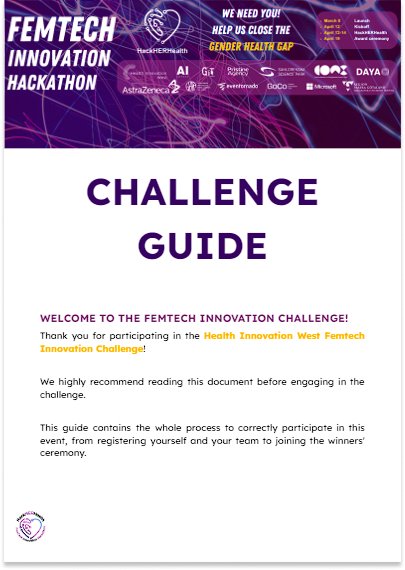Innovation challenge guide
How to plan, organise, and execute an innovation challenge in 2024, with expert tips.
Published on the 1st of March 2024. 9.5 min read.
Introduction
Innovation challenges are everywhere, and there’s a reason for that: companies organising them are experiencing continuous growth and many management boards already recognise them as an effective and solid tool in achieving strategic goals.
This guide provides a comprehensive roadmap, meticulously examining every stage of organising an innovation challenge, from delivering a complete pre-challenge ideation phase to accompanying the teams in their ideas‘ acceleration, incubation, and mentoring phase.
Spoiler: effective execution is always key to the success of an innovation challenge.
What innovation challenges focus on? Which problems do they solve? The field organisers operate in drive the goal of the innovation challenge.
The benefits of running an innovation challenge are stimulating employees’ creative thinking, identifying external top talent, enhancing the company’s brand awareness, developing a novel product, or a deeper engagement with stakeholders.
If you’re not familiar with what an innovation challenge is then we recommend you to read this article before continuing reading.
Innovation challenge planning
Decide on the challenge goal and its sub-categories
Define the targeted participants
Tailor the prizes around your audience
Design an incredible challenge website
Onboard the mentors, partners, and stakeholders
Promote the event
Use a great innovation management platform
Challenge guide for participants: timeline, process, and deliverables
Organise and host an ideation phase
Kick off, support, and monitor the progress
Host a memorable winners ceremony
Accelerate and incubate the ideas
Conclusion
Let’s start with something easy (or maybe not):
1. Decide on the challenge goal and its sub-categories
While it might seem simple and obvious, selecting the innovation challenge goal and its related categories is not an easy task.
This decision process is crucial and must involve several actors inside the same company, which can take time in some cases.
The whole meaning of an innovation challenge is often to keep up with the current trends and anticipate competitors’ moves.
That is why this decision must be taken carefully.
Make sure to actively and directly involve the top management, whenever possible, to get any necessary approval before engaging in the actual activities planning.
If you’re looking for inspiration on your innovation challenge theme you can read this article, which provides some real case examples.
Once the main goal is defined, it’s always a good idea to split it into several categories.
This is how you can further drive and direct the incoming ideas towards your specific goals.
Even if you’re 100% sure about your sub-categories, it’s a good idea to make some room for a Wildcard category, in case some of the participants have a great idea that doesn’t completely fit in your boundaries.
This way you also maximise the number of teams and participants in your innovation challenge.
2. Define the targeted participants
Once you’ve agreed upon the innovation challenge goal and sub-categories you’re ready to build up from them to define the targeted audience.
Carefully re-read what you’ve stated in the categories description and imagine the right persona, skills, backgrounds, startups, companies, entities, and profiles that would be perfect to solve them.
The result of this process will be needed in points 3. and 6. of this guide when we will define the prizes and describe how to promote the event.
Okay, you’ve defined your audience.
But why don’t you let it rest for a couple of days and then come back to see if you missed something about it?
Maybe some other idea came up.
Maybe having data scientists and not only researchers could be beneficial.
Or maybe also involving Sales Rep. profiles and not only Project Managers could help and complement their point of view, resulting in more complex, connected, and refined final solutions.
3. Tailor the prizes around your audience
Since you now have the perfect audience for your innovation challenge, you can start thinking about what would be the most attractive prize for them.
Guess what?
It’s not always about money.
Maybe they would prefer to be hired by you.
Or maybe they see more value in having their idea incubated than receiving a cash amount.
Make sure to think this through.
Well-defined innovation challenge prizes have an impact on its success.
An audience-tailored prize pool maximises the chances for people to register and engage in your event.
Choosing compelling prizes can also enhance your company’s public perception.
Outsiders will see your company as attractive, solid, and innovative.
4. Design an incredible challenge website
It’s very important to have a well-structured, clear, UX-optimised, and graphically appealing innovation challenge website.
It’s a good idea to hire qualified graphic designers to create a great event-coordinated image.
They must be capable of translating abstract concepts and ideas into visually appealing designs for the innovation challenge homepage and the sub-categories.
Graphic design is a powerful tool for conveying messages, establishing event brand recognition, and creating memorable audience experiences.
Having an expert web designer to build the innovation challenge website is crucial.
You need someone capable of delivering high page speed, applying the latest SEO techniques, building a flawless UX, and ensuring great mobile responsiveness.
A great website usually means more registrations and a reduced event promotion cost and effort.
5. Onboard the mentors, partners, and stakeholders
A solid mentors, partners, and stakeholders ecosystem is key for the quality of an innovation challenge and the level of support and guidance provided the the participating teams.
A good mix of mentors’ composition is 70% internal and 30% external.
Internal mentors have the knowledge, vision, and experience to make sure the teams are going in the right direction, taking into account the company’s goal.
They guide the teams and make sure their ideas are relevant to solving one of the sub-categories and are actionable for the company itself.
External mentors connect the dots and fill the knowledge or technology gaps.
These are usually trusted people from the company’s partners and network.
At last, partners and stakeholders can have a role in providing live sessions’ speakers or training for the participants.
They’re also a great way to spread the word about the event with their network, expanding the event’s reach.
This activity should be done well in advance.
These kinds of profiles usually have a very busy schedule and it might be difficult to book them for your innovation challenge without very early notice.
6. Promote the event
This task is among the most complex of the whole innovation challenge organisation.
A holistic approach is what you want to pursue.
Make sure to address all the possible channels such as social media paid campaigns, email marketing, and partnerships with other organisations to reach a wider audience of potential participants.
Diversify your paid ads strategy (in case you plan to allocate some budget for it).
Run your ads in parallel on Meta Ads, LinkedIn Ads, and Reddit Ads.
After gathering relevant data through A/B testing, you can move your budget to the most successful channel, ad group, or ads.
Make sure you create UTM links for each one of your ads to keep track of the GA4 events happening on the innovation challenge website.
Unity is strength: involve the innovation challenge partners and stakeholders in your campaign and leverage their network to promote the event.
Create a pre-built communication toolkit to make your promotional partners’ lives easier.
It should contain at least a social media post that your partners, mentors, and stakeholders can reshare within their networks: word of mouth is by no means dead.
7. Use a great innovation management platform
Automating and centralising the hackathon process through a great innovation platform is the best way to have everything under control during your innovation challenge.
An innovation challenge platform can streamline the organisation process by providing tools for registration, team formation, project submission, and judging, saving several man-days and effort for the organisers, and making the event run more smoothly.
All the information about the event, including registrations and ideas, is centralised, making it the only place for the participants to stay informed and engaged throughout the event and for the organisers to take a look at the big picture.
The communication and team formation processes happen in the same place.
The hackathon chat includes several channels like #general; #announcement; #mentors; #technicalsupport, etc. This guarantees participants to connect, form teams, communicate with mentors, and work together more effectively.
At last, the ideas judging process is also enhanced since the platform provides easy tools for evaluating and scoring projects.
Avoid combining different tools.
A classic example could be using Google Forms for registrations, Slack for communications, and a third tool (maybe some sort of Drive) for the submissions.
But what if a team changes its name right before the hackathon starts?
The organiser will need to remember the old name, change it with the new name in Slack, inform the Mentor about it, and then rename the teams’ folder in the Drive.
And what if a team member leaves the team?
We’ll stop here.
8. Challenge guide for participants: timeline, process, and deliverables
Creating and making available a document explaining in detail the innovation challenge process, the desired outcomes and deliverables, and the event timeline is something you cannot miss.
A challenge guide provides participants with all the essential information they need to know about the event, such as the timeline, rules, how to connect with mentors, and judging criteria.
The guide helps the teams prepare for the innovation challenge, including resources such as design thinking tools, inspirational material, documents, references, access to software, and technical guides.
This can help participants feel more confident and prepared to tackle the challenge at hand, together with saving them a lot of time.
A challenge guide provides a sense of structure and guidance, enhancing the overall experience for participants, while at the same time making the event more credible and professional.
Involve your graphic designer while creating the document.
Generating the information itself is important but presenting it in the right way also is.
9. Organise and host an ideation phase
One of the crucial aspects of organising an innovation challenge is to provide the participants with everything that they need to correctly participate.
We highly recommend complementing the challenge guide tool with an ideation phase.
How an ideation phase can be beneficial for the innovation challenge?
And what are the benefits for the participants themselves?
First of all, it’s the chance for them to get to know your brand, tools, and services.
You can fill every information gap that participants might have.
The sessions provide important information about the challenges, rules, judging criteria, and timeline.
Together with the challenge guide, this type of live session helps to ensure that participants have a clear understanding of what is expected of them and can prepare accordingly.
Secondly, an ideation phase creates an opportunity for face-to-face Q&As, clarifying any doubts the teams may have.
Additionally, you can run dedicated training to generate and promote new methodologies and approaches for the participants to adopt during your innovation challenge.
Try to leverage a design thinking approach while defining the ideation phase.
10. Kick-off, support, and monitor the progress
Launch your innovation challenge in full regalia.
Organise a challenge kick-off event with interactive polls, high-profile speakers, and great content.
If the event has started and the teams are working it doesn’t mean that your work is done.
Perpetual support to the teams is very important.
The communication tool must be checked very frequently for new requests.
Contact the mentors to understand how their teams are proceeding and act accordingly in case of issues.
In general, constantly keep an eye on the event.
Monitor changes, detect suspicious activity, try to read the teams’ behaviour and act accordingly.
Organise mini-challenges for the teams to break routine and have some fun.
They’re also a great way to generate social media materials such as team pictures from the event.
11. Host a memorable winners ceremony
It’s important to celebrate after some hard work, both for you as an organiser and also for the innovation challenge teams.
Celebrating is a very important opportunity to build up synergies, recover from the even pressure, and unload naturally and positively any tension deriving from the challenge.
The run of the show will depend on the type of your event (completely online, hybrid, or physical).
However, the most common situation is to hold a physical event.
Why?
Because people can finally interact face-to-face and get that “let’s meet” feeling that they might have missed during the online activities.
Additionally, invite high-profile stakeholders to speak.
They’re usually very keen to join, raising the bar of your event’s credibility and prestige.
At last, a winners’ ceremony is an incredible chance for your marketing to produce materials that can be used to enhance the company’s external perception and raise brand awareness.
Involve photographers, videomakers, and the communication business unit.
Bring a digital timer (maybe a tablet) if you plan to have the teams pitch their ideas in front of the audience.
They usually tend to overspeak.
If they do, you can encounter some complaints from other teams that respected their allowed speaking time instead.
About catering: make sure to collect all the information about food intolerances and preferences from the attendees.
You’d want to make everybody happy and satisfied.
12. Accelerate and incubate the ideas
You delivered the prizes to the teams and you closed the doors of the ceremony room.
The work is not done, yet.
An innovation challenge entails an acceleration/incubation phase that ensures the ideas are not put on the back burner.
There’s no magic formula for how this phase is conducted.
It will depend on the design of the innovation challenge and the nature of the ideas themselves.
One of the most common best practices is to hire experts to mentor the teams for several months after the challenge ends.
Another one is to partner with specialised companies that can provide technical, intellectual, and logistical support and tools to the winning teams.
These decisions must be tailored each time.
As for onboarding mentors and stakeholders, defining the actors and agreements on the acceleration and incubation responsibilities is an activity that must be performed and secured well in advance.
These affiliations sometimes require the top management's approval.
13. Conclusion
The content of this guide is just the tip of the iceberg.
It shares just some of the most common key points and tasks to be performed.
Nonetheless, there are hundreds more under the water level, that only seasoned innovation challenge organisers are aware of.
Organising an innovation challenge requires skills, networks, experience, and high adaptability skills.
The success of an innovation challenge often relies on experts’ services.
These experts can identify project dependencies and ensure that all event organisation best practices are implemented effectively.
Get in touch to talk about your next innovation challenge.









